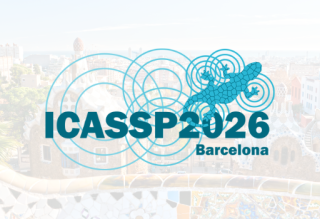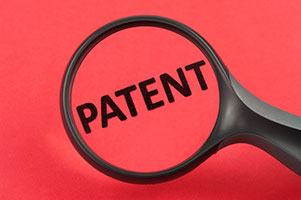- Our Story
- Publications & Resources
- Publications & Resources
- Publications
- IEEE Signal Processing Magazine
- IEEE Journal of Selected Topics in Signal Processing
- IEEE Signal Processing Letters
- IEEE Transactions on Computational Imaging
- IEEE Transactions on Image Processing
- IEEE Transactions on Information Forensics and Security
- IEEE Transactions on Multimedia
- IEEE Transactions on Signal and Information Processing over Networks
- IEEE Transactions on Signal Processing
- IEEE TCI
- IEEE TSIPN
- Data & Challenges
- Submit Manuscript
- Guidelines
- Information for Authors
- Special Issue Deadlines
- Overview Articles
- Top Accessed Articles
- SPS Newsletter
- SigPort
- SPS Resource Center
- Publications FAQ
- Blog
- News
- Dataset Papers
- Conferences & Events
- Community & Involvement
- Professional Development
- For Volunteers
- Information for Authors-OJSP
-
Home
Conferences Events IEEE Signal Processing Magazine IEEE SPL Article IEEE TIFS Article IEEE TMM Article IEEE TSP Article Jobs in Signal Processing Lectures Machine Learning Seasonal Schools Signal Processing News SPM Article SPS Distinguished Lectures SPS Newsletter Article SPS Webinar SPS Webinars SPS Webinar Series Webinar webinars
-
Our Story
What is Signal Processing?

The technology we use, and even rely on, in our everyday lives –computers, radios, video, cell phones – is enabled by signal processing. Learn More » -
Publications & Resources
-
SPS Resources
- Signal Processing Magazine The premier publication of the society.
- SPS Newsletter Monthly updates in Signal Processing
- SPS Resource Center Online library of tutorials, lectures, and presentations.
- SigPort Online repository for reports, papers, and more.
- SPS Feed The latest news, events, and more from the world of Signal Processing.
-
SPS Resources
-
Conferences & Events
-
Community & Involvement
-
Membership
- Join SPS The IEEE Signal Processing Magazine, Conference, Discounts, Awards, Collaborations, and more!
- Chapter Locator Find your local chapter and connect with fellow industry professionals, academics and students
- Women in Signal Processing Networking and engagement opportunities for women across signal processing disciplines
- Students Scholarships, conference discounts, travel grants, SP Cup, VIP Cup, 5-MICC
- Young Professionals Career development opportunities, networking
- Get Involved
-
Technical Committees
- Applied Signal Processing Systems
- Audio and Acoustic Signal Processing
- Bio Imaging and Signal Processing
- Computational Imaging
- Image Video and Multidimensional Signal Processing
- Information Forensics and Security
- Machine Learning for Signal Processing
- Multimedia Signal Processing
- Sensor Array and Multichannel
- Signal Processing for Communication and Networking
- Signal Processing Theory and Methods
- Speech and Language Processing
- Technical Working Groups
- More TC Resources
-
Membership
-
Professional Development
-
Professional Development
- Signal Processing Mentorship Academy (SigMA) Program
- Micro Mentoring Experience Program (MiME)
- Distinguished Lecturer Program
- Distinguished Lecturers
- Distinguished Lecturer Nominations
- Past Lecturers
- Distinguished Industry Speaker Program
- Distinguished Industry Speakers
- Distinguished Industry Speaker Nominations
- Industry Resources
- IEEE Training Materials
- Jobs in Signal Processing: IEEE Job Site
-
Career Resources
- SPS Education Program Educational content in signal processing and related fields.
- Distinguished Lecturer Program Chapters have access to educators and authors in the fields of Signal Processing
- Job Opportunities Signal Processing and Technical Committee specific job opportunities
- Job Submission Form Employers may submit opportunities in the area of Signal Processing.
-
Professional Development
-
For Volunteers
-
For Board & Committee Members
- Board Agenda/Minutes* Agendas, minutes and supporting documentation for Board and Committee Members
- SPS Directory* Directory of volunteers, society and division directory for Board and Committee Members.
- Membership Development Reports* Insight into the Society’s month-over-month and year-over-year growths and declines for Board and Committee Members
-
For Board & Committee Members
Popular Pages
Today's:
- Information for Authors
- (ICME 2026) 2026 IEEE International Conference on Multimedia and Expo
- IEEE Transactions on Information Forensics and Security
- IEEE Transactions on Image Processing
- Signal Processing Mentorship Academy (SigMA) Program
- Submit a Manuscript
- IEEE Transactions on Multimedia
- (ASRU 2025) 2025 IEEE Automatic Speech Recognition and Understanding Workshop
- Information for Authors-SPL
- Membership
- IEEE Transactions on Audio, Speech and Language Processing
- Conference Call for Papers
- IEEE Signal Processing Letters
- Data Science Initiative
- Signal Processing Cup
All time:
- Information for Authors
- Submit a Manuscript
- IEEE Transactions on Image Processing
- IEEE Transactions on Information Forensics and Security
- IEEE Transactions on Multimedia
- IEEE Transactions on Audio, Speech and Language Processing
- IEEE Signal Processing Letters
- IEEE Transactions on Signal Processing
- Conferences & Events
- IEEE Journal of Selected Topics in Signal Processing
- Information for Authors-SPL
- Conference Call for Papers
- Signal Processing 101
- IEEE Signal Processing Magazine
- Guidelines
Last viewed:
- Redesigned OU Monthly Statistics Now Available
- SPS Scholarship Program
- Call for Project Proposals: IEEE SPS SigMA Program - Signal Processing Mentorship Academy
- Signal Processing Mentorship Academy (SigMA) Program
- (SPAWC 2026) IEEE 27th International Workshop on Signal Processing and Artificial Intelligence for Wireless Communications
- Open AI Bot Defeated Human Teams in 5v5 Dota 2 Games
- SPS JSTSP Webinar: Overview of Special Issue on Neural Speech and Audio Coding
- Editorial Board
- (ICME 2026) 2026 IEEE International Conference on Multimedia and Expo
- Information for Authors OJSP
- Deep Learning Meets Sparse Regularization: A signal processing perspective
- About the Magazine
- Information for Authors-SPL
- SPS-DSI Webinar: Graph Neural Networks for Learning Nonlinear Power System Operations
- Access Restricted
Recent Patents in Signal Processing (November 2017) – Image and audio inpainting
You are here
Newsletter Menu
Newsletter Categories
Top Reasons to Join SPS Today!
1. IEEE Signal Processing Magazine
2. Signal Processing Digital Library*
3. Inside Signal Processing Newsletter
4. SPS Resource Center
5. Career advancement & recognition
6. Discounts on conferences and publications
7. Professional networking
8. Communities for students, young professionals, and women
9. Volunteer opportunities
10. Coming soon! PDH/CEU credits
Click here to learn more.
News and Resources for Members of the IEEE Signal Processing Society
Recent Patents in Signal Processing (November 2017) – Image and audio inpainting
For our November 2017 issue, we cover recent patents granted in the area of image and audio inpainting
Patent no. 9,583,111 presents a method for packet loss concealment, that includes: continuously receiving a digital audio stream; extracting audio features from the digital audio stream while the digital audio stream is unharmed; and upon detecting a gap in the digital audio stream, filling the gap with one or more previous segments of the digital audio stream, wherein the filling is based on a matching of the one or more of the extracted audio features with one or more audio features adjacent to the gap.
The invention no. 9,443,285 introduces a method for replacing image data in a destination region that is divided into sub-pieces along one or more cutting paths, which start and end at two different points on the border, and finding replacement data for the sub-pieces. The cutting paths may be determined as a function of the type of image structured at the start and the end points. The cutting paths may also be determined as a function of the area of the sub-pieces and the lengths of the cutting paths. Optionally, the destination region may be determined by a spot detection algorithm. Further optionally, the spot detection algorithm may comprise calculation of a high pass filter, or detection of areas of luminosity and border-to-volume ratios. A method for moving an image element within an image is also provided.
In patent no. 9,378,583 an apparatus and method for bidirectionally inpainting an occlusion area appearing during generation of a virtual viewpoint image, using a foreground area and a background area based on a predicted volume are provided. The method includes receiving an input of a depth image and a color image, the depth image having depth information for a first viewpoint, and the color image having color information for the first viewpoint, generating a virtual viewpoint image at a second viewpoint based on the depth image and the color image, separating the virtual viewpoint image into a foreground area and a background area, based on the depth information and direction information regarding a direction from the first viewpoint to the second viewpoint, predicting a three-dimensional (3D) volume of the foreground area, and inpainting an occlusion area bidirectionally using the foreground area and the background area, based on the predicted 3D volume, the occlusion area being included in the virtual viewpoint image.
In patent no. 9,256,926 a method of processing an image signal comprising image and depth information is provided. The method is configured to perform segmentation on an image based on depth/disparity information present in the image signal comprising said image, and subsequently inpaint background for correction of the errors in the image around the foreground objects into a region that extends beyond the segment boundary of the foreground object and/or inpaint foreground for correction of errors in the image into a region that extends inside the segment boundary of the foreground object. In this way compression and other artifacts may be reduced.
As descibed in patent no. 9,230,309, the image processing apparatus inpaints a part of an image displayed on the display unit. The control unit determines a removal patch including a removal region and a first non-removal region that is a region that does not include the removal region in the image, and replace pixel values of pixels included in the removal region with pixel values of pixels outside the removal patch. The control unit calculates a distance from the removal region for pixels included in the first non-removal region, blends pixel values of the pixels included in at least a portion of the first non-removal region with the pixel values of the pixels outside the removal patch based on the calculated distance to obtain blended pixel values, and replaces the pixel values of the pixels included in the at least a portion of the first non-removal region with the blended pixel values.
In patent no. 9,224,052 a method for in-image periodic noise pixel inpainting is provided. It is determined whether a current frame includes periodic noise pixels, and locations of periodic noise pixels are identified. Non-periodic-noise pixels in a reference frame are utilized to inpaint the periodic noise pixels in the current frame.
Following patent no. 9,165,347, an apparatus, system, method, and article to continue border lines into an unknown region of an image from a known background; determine segments, based on the continued borders, for the unknown region of the image; and propagate pixels from a known area of the image to the unknown area based on the determined segments and continued borders.
In patent no. 9,106,892 systems and methods provide image compression based on parameter-assisted inpainting. In one implementation of an encoder, an image is partitioned into blocks and the blocks classified as smooth or unsmooth, based on the degree of visual edge content and chromatic variation in each block. Image content of the unsmooth blocks is compressed, while image content of the smooth blocks is summarized by parameters, but not compressed. The parameters, once obtained, may also be compressed. At a decoder, the compressed image content of the unsmooth blocks and the compressed parameters of the smooth blocks are each decompressed. Each smooth block is then reconstructed by inpainting, guided by the parameters in order to impart visual detail from the original image that cannot be implied from the image content of neighboring blocks that have been decoded.
If you have an interesting patent to share when we next feature patents related to image and audio inpainting, or if you are especially interested in a signal processing research field that you would want to be highlighted in this section, please send email to Csaba Benedek (benedek.csaba AT sztaki DOT mta DOT hu).
References
Number: 9,583,111
Title: Example-based audio inpainting
Inventors: Schechner; Yoav (Kiryat Bialik, IL), Elad; Michael (Kiriat Tivon, IL), Bahat; Yuval (Tel Aviv, IL)
Issued: February 28, 2017
Assignee: Technion Research & Development Foundation Ltd. (Haifa, IL)
Number: 9,443,285
Title: Method for sliced inpainting
Inventors: Kokemohr; Nils (Hamburg, DE)
Issued: September 13, 2016
Assignee: Google Inc. (Mountain View, CA)
Number: 9,378,583
Title: Apparatus and method for bidirectionally inpainting occlusion area based on predicted volume
Inventors: Lee; Seung Kyu (Seoul, KR), Lim; Hwa Sup (Hwaseong-si, KR), Lee; Kee Chang (Yongin-si, KR), Kim; Do Kyoon (Seongnam-si, KR)
Issued: June 28, 2016
Assignee: Samsung Electronics Co., Ltd. (Gyeonggi-do, KR)
Number: 9,256,926
Title: Use of inpainting techniques for image correction
Inventors: Berretty; Robert-Paul Mario (Eindhoven, NL), Magalhaes; Jose Pedro (Utrecht, NL), Klein Gunnewiek; Reinier Bernardus Maria (Eindhoven, NL), Barenbrug; Bart Gerard Bernard (Eindhoven, NL), Shao; Ling (Eindhoven, NL)
Issued: February 9, 2016
Assignee: Koninklijke Philips N.V. (Eindhoven, NL)
Number: 9,230,309
Title: Image processing apparatus and image processing method with image inpainting
Inventors: Nagaoka; Eiichi (Hyogo, JP)
Issued: January 5, 2016
Assignee: Panasonic Intellectual Property Management Co., Ltd. (Osaka, JP)
Number: 9,224,052
Title: Method for in-image periodic noise pixel inpainting
Inventors: Lin; Che-Tsung (Hsinchu, TW), Lin; Yu-Chen (Taipei, TW)
Issued: December 29, 2015
Assignee: Industrial Technology Research Institute (Hsinchu, TW)
Number: 9,165,347
Title: Method of and apparatus for local optimization texture synthesis 3-D inpainting
Inventors: Yurkov; Kirill Valerjevich (Saint-Petersburg, RU), Belyakov; Alexei Vladimirovich (Saint-Petersburg, RU)
Issued: October 20, 2015
Assignee: Intel Corporation (Santa Clara, CA)
Number: 9,106,892
Title: Image compression based on parameter-assisted inpainting
Inventors: Sun; Xiaoyan (Beijing, CN), Xiong; Zhiwei (Beijing, CN), Wu; Feng (Beijing, CN), Li; Shipeng (Palo Alto, CA)
Issued: August 11, 2015
Assignee: Microsoft Technology Licensing, LLC (Redmond, WA)
Open Calls
| Nomination/Position | Deadline |
|---|---|
| Call for proposals: 2027 IEEE Conference on Artificial Intelligence (CAI) | 1 October 2025 |
| Take Part in the 2025 Low-Resource Audio Codec (LRAC) Challenge | 1 October 2025 |
| Meet the 2025 Candidates: IEEE President-Elect | 1 October 2025 |
| Call for Nominations for the SPS Chapter of the Year Award | 15 October 2025 |
| Submit Your 2026 ICASSP Workshop Paper | 22 October 2025 |
| Call for Papers for 2026 LRAC Workshop | 22 October 2025 |
| Submit a Proposal for ICASSP 2030 | 31 October 2025 |
| Call for Project Proposals: IEEE SPS SigMA Program - Signal Processing Mentorship Academy | 2 November 2025 |
Society News
- IEEE members elected Professor Jose M. F. Moura as 2018 IEEE President-Elect
- Introducing the NEW Women in Signal Processing Directory!
- Job Opportunities in Signal Processing
- Upcoming Distinguished Lectures
- IEEE SPS and TELUS Take Off with New Video on Air Canada Flights
- 2017 Member-Driven Initiative
- IEEE SPS 2017 Members-at-Large and Regional Directors-at-Large Election Results
Conferences & Events
Technical Committee News
- Activity Update from the IVMSP TC
- Get Involved with Technical Committees via the Affiliate TC Membership
- Google Announces AVA: A Finely Labeled Video Dataset for Human Action Understanding
- New vending machines may include machine learning and facial recognition
- Signal processing in action: Brain signals hint at speech delay in babies at high autism risk
Education & Resources
SPS Social Media
- IEEE SPS Facebook Page https://www.facebook.com/ieeeSPS
- IEEE SPS X Page https://x.com/IEEEsps
- IEEE SPS Instagram Page https://www.instagram.com/ieeesps/?hl=en
- IEEE SPS LinkedIn Page https://www.linkedin.com/company/ieeesps/
- IEEE SPS YouTube Channel https://www.youtube.com/ieeeSPS
Home | Sitemap | Contact | Accessibility | Nondiscrimination Policy | IEEE Ethics Reporting | IEEE Privacy Policy | Terms | Feedback
© Copyright 2025 IEEE - All rights reserved. Use of this website signifies your agreement to the IEEE Terms and Conditions.
A public charity, IEEE is the world's largest technical professional organization dedicated to advancing technology for the benefit of humanity.








